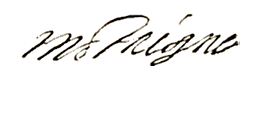Descriptive Information
Biography
CIDOC CRM dictates that textual information, such as the biography of an actor written by an expert, should be rendered with the class E33_Linguistic_Object linked to the E39_Actor through a P67_refers_to property, thus indicating that the biography refers to the actor. As seen in the section on Literal Content, the content of the biography is then documented in a string of text linked to the E33_Linguistic_Object through the property P190_has_symbolic_content.
Still, the author of a biography most often relies on other sources of information when researching and recounting the life of the actor; such information and its sources should thus also be documented. The simplest and most semantically correct way to render such a citation is to use the Dublin Core property dct:source to quote the bibliographic citation as a string of text.
For more details on this, please see Appendix F: Discussions, Biography.
| 💡 Example: Jean Paul Riopelle’s biography on Wikipedia (the contributor documented in the Named Graph) is the following: “Jean-Paul Riopelle, CC GOQ (7 October 1923–12 March 2002) was a painter and sculptor from Quebec, Canada. He became the first Canadian painter (since James Wilson Morrice) to attain widespread international recognition.” The source of this information is the following: “Tate, London, Artist Biography http://www.tate.org.uk/art/artists/jean-paul-riopelle-1847”. |
062_Example_BiographyRiopelle_p
Visual Item
Actors are often depicted in visual elements (painting, photographies, etc.) and it is important to link those images to actors, not only to give a visual representation of them but also to identify people and groups represented in such works.
CIDOC CRM distinguishes visual representations (E36_Visual_Item) both from the physical objects carrying such representations (E24_Physical_Human-Made_Thing) and from digital representations of such images (D1_Digital_Object). The links between these three image concepts is depicted in the following diagram.
063_Pattern_VisualItemDigitalObject_p
If the physical support of the image (E24_Physical_Human-Made_Thing) can be directly linked to the E39_Actor through the P62_depicts property, the digital image (D1_Digital_Object) cannot be linked to the actor. Considering how this project will mostly manage digital images, a more precise pattern accounting for the fact that there might be several supports of a single E36_Visual_Item is warranted.
Visual items are, as the scope note of the CIDOC CRM class states, “intellectual or conceptual aspects of recognisable marks and images” (Le Boeuf et al. 2015, sec. E36 Visual Item). They are independent of the orientation, size, color or other characteristic that does not affect their identification. For example, a black and white copy of the Mona Lisa would still be considered to carry the E36_Visual_Item of the Mona Lisa. A more challenging (edge) case, however, pertains to the alteration of an image that remains recognizable, but could be considered as a new item (e.g. Andy Warhol’s Marilyn Diptych, which uses a photography of Marilyn Monroe and “recolours” it can be considered as a new artwork, and therefore as a new visual item). In some cases, a visual item could be (sub)divided into multiple ones, especially if an image contains other items, as in the case of Giovanni Paolo Panini’s Modern Rome. In any case, it is possible to link multiple instances of E36_Visual_Item together with the property P165_incorporates. This pattern enables the record of the incorporation of one visual item in another one (e.g. Warhol’s Marilyn Diptych painting incorporates an original Marilyn Monroe photography; Panini’s Modern Rome incorporates several famous artworks such as Michelangelo’s Moses and Gian Lorenzo Bernini’s statues of Constantine, David, Apollo and Daphne).
In addition to precisely identifying visual items and their physical support, it is necessary to distinguish their digital renderings in the form of an image and a URL that must be refered to independently from the D1_Digital_Object URI. The URL of the digital image is thus assigned an E42_Identifier.
064_Pattern_VisualItemImageUrl_p
| 💡 Example: The digital scan of Louis the XIV of France by Hyacinthe Rigaud would be available on Wikimedia Commons at the following URL: https://upload.wikimedia.org/wikipedia/commons/5/5f/Louis_XIV_of_France.jpg  |
065_Example_VisualItemLouisxiv_p
In addition, other visual elements can be relevant to an actor’s life and production, such as signatures, companies’ logos, etc. These can be represented using the E37_Mark class connected to an E39_Actor following the same pattern as that of the E36_Visual_Item. However, this requires the use of the PC138_Represents property-class to specify (with a P138.1_mode_of_representation property) that the E37_Mark represents the actor symbolically.
| 💡 Example: Wikimedia Commons has digital representation of the signature of Michel de Montaigne available at the following URL: https://upload.wikimedia.org/wikipedia/commons/6/6d/Unterschrift_des_Michel_de_Montaigne.png  |
 Related Github Issue Related Github IssueThis topic is discussed in Issue #17 |
Curatorial Note
Most museums have a “remark” or “notes” field linked to the actors and objects they document in order to account for non-formatted text that is distinct from descriptive texts intended to be published (such as captions for example, which will be modelled later on as part of the Objects facet of this project). In order to model this kind of information, the E33_Linguistic_Object class must be used along with a E55_Type “Curatorial Note”. This E33_Linguistic_Object can then be linked to the actor it is commenting on with the property P67_refers_to. By default, the creator of the curatorial note is considered to be the institution or person providing the data (as stated in the named graph), but if a curator or expert was an explicit author/creator, it would be possible to add a creation event that could then be linked to the creator of that curatorial note.
| 💡 Example: If a fictional museum has the following curatorial note about Jean Paul Riopelle “Jean Paul Riopelle est l’un des plus grands peintres Québécois”, then we would have the following structured data: |
069_Example_CuratorialNoteRiopelle_p
Previous: Social Bonds
Next: Artefacts